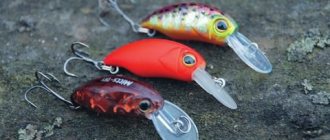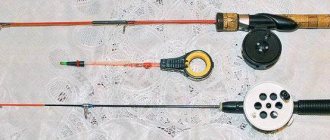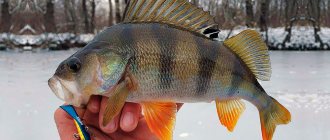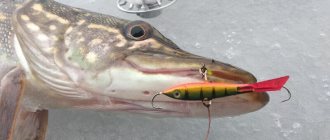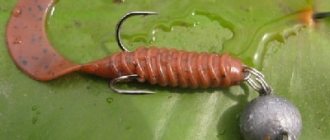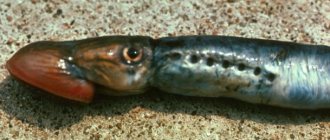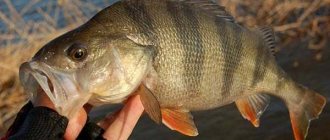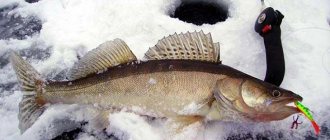Minnow
These types of wobblers, which are quite widespread among fishing gear, are also characterized by an active reaction of perch. The most effective are wobblers of the D and S series, the main characteristic of which is diving to relatively great depths.
Poppers and walkers

Poppers and walkers can also bring a good catch, provided that small (~5 cm) wobbler models are used.
Related article: catchable wobblers for pike
Features of selection and types of perch wobblers
The general name wobbler includes baits of various types, and they can be:
- floating;
- drowning;
- neutral (suspender);
- weakly floating;
- slowly sinking;
- fast-sinking.
The depth of its immersion depends on the buoyancy of the bait, and it is chosen depending on the depth and place where the predator stands. In addition, when deciding which wobblers for perch are the most catchy, take into account;
- their weight;
- dimensions;
- coloring;
- form.
Even the most famous manufacturers of fishing equipment do not have wobblers designed for catching perch specifically, but the effectiveness of lures of this type when catching humpback salmon has been proven by many anglers. The most catchy wobblers for perch are considered to be:
- shads;
- rattlins;
- minnow;
- poppers;
- composite wobblers.
Shed
The name of this type of wobbler is due to the fact that their shape is very similar to a small fish, which is found in almost all inland waters of North America. If we compare shads with fish, which are more familiar to our conditions and reservoirs, then they are very similar to roach.
The theory that perch prefers bait that resembles the usual food also works in the example of shad, but mainly when fishing at a depth of one to three meters from the surface of the water.

When fishing with shads, the so-called jerk retrieve is the most catchy, and the predator simply cannot remain indifferent to the bait, moving in the water column like a frightened roach.
But still, this type of wobbler is preferable when catching active fish at shallow depths from a boat, using twitching. Long pauses during retrieving, changing the rhythm from fast to slow, forces the perch to leave the shelter and attack the bait without looking back or fearing.
Most shad are equipped with a long blade and perform well when fishing in strong currents.
Rattlins
This type of wobbler does not have a blade and is used for perch fishing both in the summer, when the predator is active, and in the winter, when it hides in holes and goes out to hunt only when it is sure of its safety.
This is a jerk bait, somewhat reminiscent of a balance beam, and when fishing with a rattlin, a step-like wiring is used.
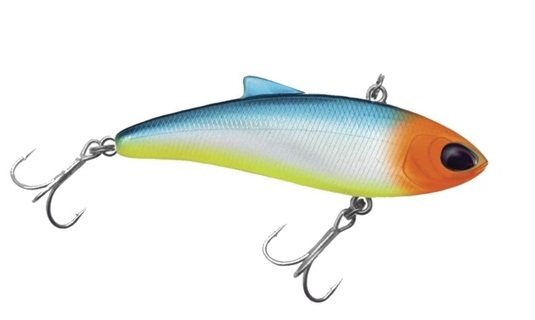
After casting, the angler makes smooth pulls, alternating them with jerks, in both planes. An important feature of this type of wobblers is that when inserted, they provide a noise effect, which also attracts a striped predator.
Rattlins are considered a search bait and are placed first on unfamiliar bodies of water in order to discover perch campsites.
Wobblers of this type are used both in the warm season for casting, and in winter, when fishing vertically, on stormy rivers, lakes and reservoirs. The best places for fishing with rattlins are the border between underwater vegetation and clean water, regardless of their location and distance to the shore.
Minnow
The name of this type of wobbler comes from the English minnow, which loosely translated means whitebait. Such wobblers for perch for spinning fishing have a slanted, elongated body equipped with a small blade.
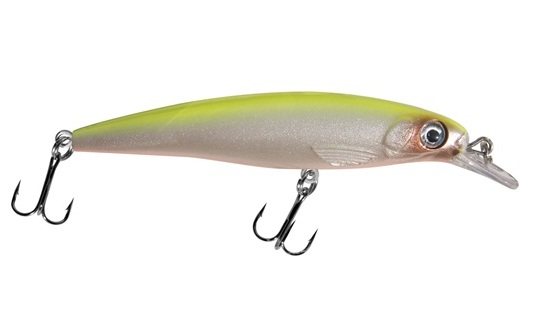
Therefore, they are caught by twitching, and at shallow depths. There are also deep-sea models of such wobblers, but there are not many of them and they do not show any outstanding results. But surface minnow wobblers for large and small perch help achieve good results.
Poppers
This type of wobbler has a fundamental difference in design in the form of a small recess in the front part of the body. It is this deepening that causes the bait to make a characteristic “chomping” sound when reeling, which, as the practice of numerous fishing shows, very attracts predatory fish, including perch.
Even during periods when the striped predator is not active, it is with the help of poppers that it is possible to stir it up and provoke it to bite.
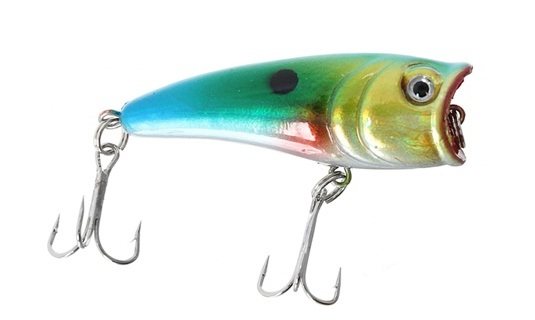
Perch is caught with poppers at shallow depths, as these are near-surface baits. The best time for fishing with poppers is from late spring to early autumn, and after the water gets colder, the effectiveness of this type of bait decreases significantly.
Poppers are used to fish in shallow water, both in overgrown and clear areas. The main thing is that there is a fry spinning there, which is very attractive to both small and large perch.
Some fishermen believe that the larger the trophy, the deeper it needs to be searched and caught. This is a big mistake, because a large humpback whale actively bites in shallow water, the main thing is that it is nearby and is tempted by the bait.
Composite wobblers
Already from the name it is clear that the design of wobblers of this type consists of several segments. The advantages of this design are manifested during active retrieving when, due to the free movement of body parts relative to each other, the bait behaves very actively, shows a lively game, and even the most passive fish cannot remain indifferent.
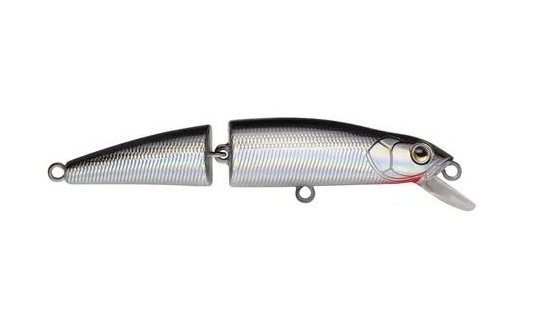
The realism of the game, the sound effect, the bright coloring of the bait, these are the factors that become the most attractive to river and lake predators and in particular to perch. If we highlight the main advantages of composite wobblers, then these are:
- high performance even for low-active fish;
- the ability to attract fish from different water horizons and distant corners of reservoirs;
- active play even with uniform wiring;
- excellent flight characteristics;
- no need to make complex and “tricky” wiring.
Composite wobblers are considered a universal bait when catching perch, both on lakes and rivers, and at different depths. Only in shallow water (up to 0.5 meters) does this type of bait perform worse, and only because fast retrieval is needed, which does not allow the bladeless wobbler to dive too deep.
Composite wobblers, in turn, are divided into several types, but for perch fishing this is no longer important, all work.
Composers
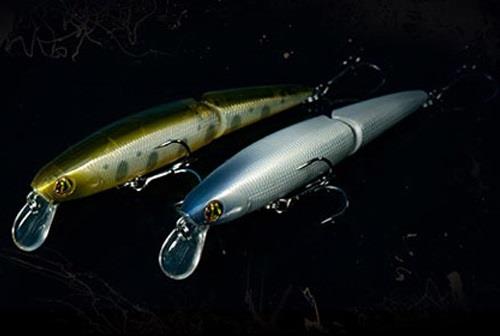
Wobblers of this type are widely used for catching stripers. The reason for this is the intensity of the wobbler’s movement during retrieval, to which the fish species in question often reacts.
Tsuribito Baby Crank 35SR
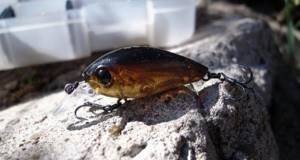
It has proven itself best in completely stagnant water and at medium currents. The main characteristics that help attract perch: diving to a depth of ~1 m, floating and other types of performance. The wobbler has a silver color, resembling a fry. When using this wobbler with slow retrieve (with periodic short accelerations), a good catch is guaranteed.
Jackall Tiny Fry 38 SP, 50 SP
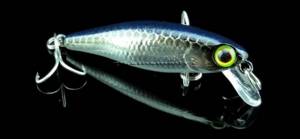
A favorite of our top list, characterized by the possibility of great depth and effectiveness with any form of wiring. The average price for this “catcher” is $12.
Jackson KOMACHI
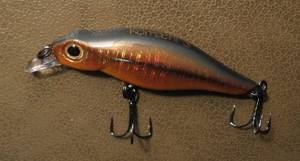
It has proven itself well when fishing with jerking retrieves (with periodic short pauses) with a depth of up to 0.3 m. Average price - $17
Smith Still
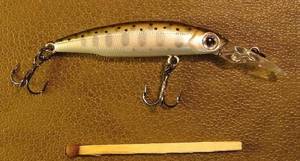
It has personally proven itself when fishing for perch in shallow waters with weak currents. Immersion depth – 1m. The average price becomes $19
SMITH AN-DO
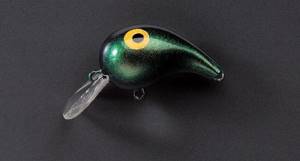
The main difference from other models is the drop-shaped shape, which ensures accurate casting. The optimal immersion depth is up to 0.3 meters. Price — 21$
Tiny Fry 38
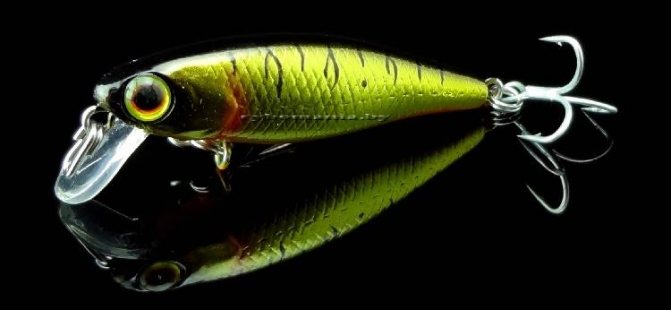
First place in our rating, an excellent wobbler for perch, with cool colors and big eyes.
Jackall Chubby Minnow 35
The main advantage is excellent hydrodynamics and stability on water. The maximum working depth becomes 0.5 meters. Average cost: $14
Megabass Baby Griffon
It proved to be most effective when catching perch in rivers. The optimal depth is 1m. The average price of the model is $24
Smith Towadi

An impeccable leader among ultralight topwaters, the average price of which is ~$22
Jackall Flat Fly 50 SP
The best option for catching perch using the twitching method, in which the wobbler actively moves in different directions. The depth of this model varies around 0.5-1 meters. Such a wobbler will cost you approximately $13.
Jackall Chubby 38F
This wobbler is distinguished by good balancing, as well as excellent aero- and hydrodynamics. Effective working depth is 0.5-1 m. The average price of a wobbler is $13.
Catching perch with a wobbler (video)
If you are not familiar with our previous review of wobblers, I recommend that you look at it here - rating of wobblers for pike. The review included 12 of the most catchy minnows. Every experienced spinning player should know these wobblers :)
Author of the article: Vitaly Leonidovich Ivanov, 2021.
Options for catching perch with wobblers
There are two main directions for catching this underwater inhabitant using wobblers. Lures of the minnow class involve the use of twitching, cranks and shads - uniform wiring and other animation techniques, some with jerking elements.
The technique of catching perch using wobbler-twitching is an independent method of fishing for striped robber. It requires the fisherman to have certain skills and experience in handling tackle. However, the result that jerky animation of baits gives sometimes surpasses all other fishing methods, especially if it is possible to detect an active predator.
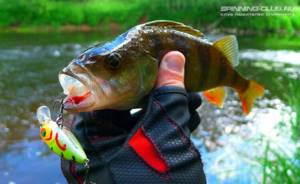
Hunting for perch with cranks or shads is easier for a beginner to master. The point is to select the most suitable bait model for fishing conditions and present it to the predator’s field of view. The key role in this case is played by the speed of the retrieve, the size of the bait, the amplitude and frequency of its movements, and color.
Sometimes a situation arises that the fish is at a considerable depth, where it is impossible to reach with a miniature bait. Then you use a retractable leash with a wobbler to catch perch. It consists of the following:
- A triple swivel is tied to the main line.
- A piece of fishing line about half a meter long is fixed to the bottom loop of the swivel, and a sinker of the required weight is attached to it.
- A piece of monofilament up to a meter long is knitted to the second free loop of the swivel. A wobbler is attached to it.
In this way, it is possible to fish in deep places using small models of wobblers. Sometimes the perch on a spinning rod takes better in this case than on a classic spaced rig with silicone bait.
